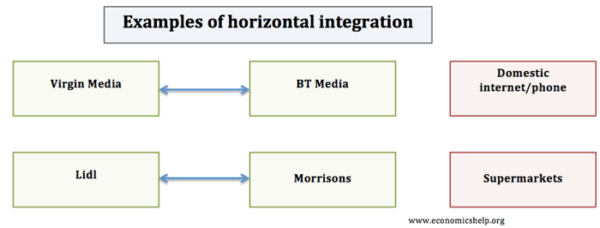
By construction, this sample is selected toward older firms that are likely to be less financially constrained (Hadlock and Pierce, 2010). In the regression for Column (4), we use an industry-adjusted measure of RE assets (Industry RE). This measure imputes the missing value of RE assets (post-1993) as the product of the PPE to total cost of financial distress assets ratio in year t by the industry average RE assets to PPE ratio during 1976–93. At the cost of a significant reduction in the sample size, and sample selection toward older firms that were active in 1993, in robustness tests, we proxy for a supplier’s exposure to the local RE market each year using alternative measures.

Immediately following, we describe our general methodology and strategy for estimating financial distress costs. Section 3 considers the benchmark case where we allow financial distress costs to accrue only when the firm defaults; here, we characterize default costs under a variety of default rules, assumptions for loss given default, and in different risk environments. Then, in Section 4, we develop closed-form solutions for a model that explicitly allows for pre-default financial distress losses, and estimate ex ante financial distress costs under this regime.
Data and Methodology
Indeed, in the presence of incomplete contracts, lower collateral values affect the likelihood of a firm’s financial distress by increasing its external financing premium, which acts to decrease its creditworthiness and borrowing capacity (Hart and Moore, 1994). Furthermore, this collateral channel is stronger for firms with low net worth and constrained firms (Bernanke and Gertler, 1989; Chaney, Sraer, and Thesmar, 2012). Thus, the balance sheet strength of a firm should also play a key role in the transmission of financial distress to economic distress. Our article is also related to the literature on the role of a firm’s balance sheet in the transmission of business cycle shocks (Bernanke and Gertler, 1989; Kiyotaki and Moore, 1997; Bernanke, Gertler, and Gilchrist, 1999). Giroud and Mueller (2017) show that highly levered firms exhibit significantly larger declines in employment in response to drops in local consumer demand (proxied by RE prices) during the Great Recession.
- Lower quality management and corporate governance lead to a higher probability of financial distress.
- The results suggest that policymakers may pay special attention to the quality of a firm’s capital structure strategies while predicting corporate financial distress costs.
- Furthermore, this study contributes to the existing literature by adding new evidence from developing countries such as Pakistan which are helpful for regulatory bodies and policymakers in the formulation of long-term strategies to manage the financial distress costs.
Columns (3) and (4) present results for the sample firms split into low and high inventory in the firm’s industry according to the median value of the distribution of the average ratio of inventory to cost of goods sold by the industry. We find that the triple interaction coefficient is similar in magnitude in both groups, although the coefficient is more precisely estimated in the high inventory group. This result supports the notion that clients reduce their purchases from a distressed supplier. If, instead, suppliers cut back production, we would expect to see a stronger effect in the sales of the low inventory group than in the high inventory group. The high inventory group could use inventory to maintain its ability to supply its products with the same quality.
On the existence of an optimal capital structure: theory and evidence
Using the land supply elasticity instrument for RE prices of Saiz (2010), we estimate our results in a subsample of counties with high land supply elasticity, where RE prices are less responsive to economic conditions. Our results continue to hold in this subsample, alleviating the concern that omitted economic conditions at the supplier’s location may be driving our results. In this sense, distress costs can lead to a vicious cycle, deepening the degree of distress. Distress cost refers to the expense that a firm in financial distress faces beyond the cost of doing business, such as a higher cost of capital.

Thus, the fraction of suppliers located in counties with negative price changes varies from virtually 0% in 2000–05 to 96.1% in 2010, with a large degree of variation across years; 29.1% of all the observations correspond to firm–years with negative changes in local HPs. Supplementary Appendix Figure IA.1 shows that there is also a large geographical variation in the change in RE prices across counties. County-level RE returns are mostly explained by idiosyncratic factors as opposed to systematic factors, which is consistent with the notion that RE shocks are mostly idiosyncratic. We estimate the indirect costs of financial distress due to lost sales by exploiting real estate (RE) shocks and cross-supplier variation in RE assets and leverage. We show that for the same client buying from different suppliers, the client’s purchases from distressed suppliers decline by an additional 13% following a drop in local RE prices. The effect is more pronounced in more competitive industries, manufacturing, durable goods, less-specific goods, and when the costs of switching suppliers are low.
However it can be estimated by reference to industry norms for key financial credit assessment ratios such as interest cover and debt equity ratios. If high debt burden is the cause of financial distress, the company can undergo a debt restructuring. If operational issues are the reason for the distress, the company can negotiate a payment holiday with its creditors, while improving operational efficiency so as to be able to service its debt. If the latter improvements are insufficient, the company may engage in the more extensive turnaround management.
These results are in line with Cvijanović (2014) and provide support to the notion that negative RE shocks hinder firms’ ability to raise financing. In the regression for Column (4) of Supplementary Appendix Table IA.9, we consider the continuous ratio of debt to assets (standardized to have a mean of zero and a standard deviation of one, to ease the economic interpretation of the results) as our measure of Leverage. Consistent with prior results, the estimated coefficient suggests that a one-standard deviation increase in leverage leads to a 9.4% larger reduction in the sales of distressed firms. In the regression for Column (5), we consider the ratio of short-term debt to total assets (standardized as before) as our measure of Leverage. This measure accounts for the fact that financial distress could be severe if the supplier relies more on short-term debt financing (i.e. financing with maturity of less than 1 year) as opposed to long-term debt.
Financial distress prediction: The case of French small and medium-sized firms
Having no background in finance at all, I tried very hard to read the curriculum from cover to cover, but eventually that fell flat. I can still recall the number of times I dozed off while studying, or just going back and forth trying to understand even the simplest concept. We update the Saiz (2010) housing supply elasticity data for housing elasticities to cover our 2000–15 sample period. Using firm changes as the dependent variable for cross-sectional comparisons is also common in corporate finance settings (e.g. Banerjee and Duflo, 2014). This approach is also motivated by evidence that suppliers’ leverage decisions are also very likely influenced ex ante by the nature of their customer bases (Kale and Shahrur, 2007; Banerjee et al., 2008).
This is an innovative research in terms of the mutual relationship between debt and ownership structure and the use of equations system to measure the interaction between them. A caveat is that when we do not observe such transactions, it may not necessarily indicate that a client stops buying from a supplier, but instead that this client’s purchases are not above the 10% threshold imposed for reporting purposes. Our focus is on business-to-business transactions; therefore, we only consider firm-level demand, not consumer demand. Analysts reviewing a company’s financials in order to assign a value typically assume that the business will be around for the foreseeable future and that any financial distress is temporary in nature. These assumptions allow the valuation to include a discounted cash flow relatively far into the future. Financial distress is a condition in which a company or individual cannot generate revenue or income because it is unable to meet or cannot pay its financial obligations.
The implications drawn from this study are constrained by two primary limitations. First, the present study is conducted in an Iranian setting; therefore, the data utilized for the study only contain companies listed on the Tehran Stock Exchange. The utilization of listed companies on the Tehran Stock exchange is likely to affect the generalizability of the study in a national context. Second, the authors were unable to extend the sample time period due to some major deficiencies in the Tehran Stock Exchange library and its supplementary software. Other factors that can affect the probability of financial distress include the quality of a firm’s management and the company’s corporate governance structure.
The costs of bankruptcy
Our sample consists of 15,214 supplier–client–year observations for 2,229 suppliers and 485 clients over 2000–15, with an average of slightly less than 1,000 observations per year. Sales to clients in our sample account, on average, for 36.7% of the total sales of sample firms. Distress cost refers to the expense that an organization in financial distress faces beyond the cost of doing business, such as a higher cost of capital. If additional capital is not acquired, distress costs may extend to the need to sell assets quickly and at a loss to cover immediate needs. Companies in distress tend to have more difficulty meeting their financial obligations, which translates to a higher probability of breaching covenants or even defaulting.
Credit Card Debt Hits A Record $1 Trillion As Americans Face Increasing Costs And Financial Insecurity – Forbes
Credit Card Debt Hits A Record $1 Trillion As Americans Face Increasing Costs And Financial Insecurity.
Posted: Wed, 09 Aug 2023 16:03:52 GMT [source]
We analyze this issue by estimating Equation (1) separately for groups of suppliers with lower and higher than median values in the distribution of working capital (receivables and inventory) and investment. In Column (2) of Table VI, we report the results of estimating Equation (1) for the subsample of small suppliers located in large counties. In this test, we address the potential concern of reverse causality (i.e. the financial distress of a supplier is the direct cause of the local RE shock). By restricting the sample to small suppliers (below the 95th percentile of total assets) in large geographical areas (above the 95th percentile of county population), we reduce reverse causality concerns. We find that the triple interaction coefficient for this subsample is –19% and statistically significant at the 5% level.
If this reduction were supplier initiated, we would expect to see a decline in inventory as suppliers cut back production. An alternative interpretation for a negative coefficient, which is also consistent with a cost of financial distress, is that sale prices decrease more for distressed firms. Our baseline results include RE assets reported as a firm’s fixed assets in the balance sheet. Consistent with the notion that leased assets cannot be used as collateral, the estimated coefficients are larger than our baseline estimates. At the point at which the borrower breaches the industry norm for key ratios, it is likely that significant financial distress costs will be incurred. Almeida and Philippon (2007) estimates might include some costs of financial distress that occur before the default event, but they only focus on default events.
Credit card debt topped $1 trillion nationally. Here’s what New … – Crain’s New York Business
Credit card debt topped $1 trillion nationally. Here’s what New ….
Posted: Wed, 09 Aug 2023 18:57:42 GMT [source]
Columns (1) and (2) of Table VII present the results of regressions with supplier industry-by-client-by-year fixed effects for groups of suppliers with lower and higher than median values, respectively, in the distribution of the market share. We find that the negative effect of financial distress is only statistically and economically significant for suppliers with low market share. The decrease in sales is much less pronounced and statistically insignificant for suppliers with high market share. The change in RE prices may be endogenous to the demand for a firm’s products or services. A local economic shock could affect both RE prices and the demand for a firm’s products.
We find that the decline in sales due to financial distress is similar across industries with different levels of trade credit, inventory, and investment. The indirect costs of financial distress are more pronounced in more competitive industries, manufacturing and durable goods industries, and for producers of less-specific goods. In addition, we find that durable goods sales decline more than non-durable sales in distressed multi-segment firms. These results suggest that the indirect costs of financial distress are driven by clients reducing purchases from distressed suppliers, rather than by suppliers cutting back their supply of products and/or services. We next test the prediction that financially distressed suppliers suffer a reduction in sales because they cannot invest in working capital and fixed capital. Distressed suppliers in industries that extend more trade credit should face a larger decline if financial constraints hamper their ability to extend credit to their clients.
Moreover, as mentioned before, the interpretation of indirect costs of financial distress does not require financial distress to materialize in an extreme event such as default or bankruptcy. We next address the concern that the choice of leverage and RE assets are endogenous, which may compromise our identification strategy. We restrict our sample to firms with high leverage and high RE assets; thus, we are just exploiting the variation in RE prices. Supplementary Appendix Table IA.14 shows a significant reduction in sales following a drop in HPs. Although this approach is more limited in terms of the external validity of the results, it improves the internal validity of our estimates. Our sample covers a wide variety of firms and industries that are representative of developed countries.

